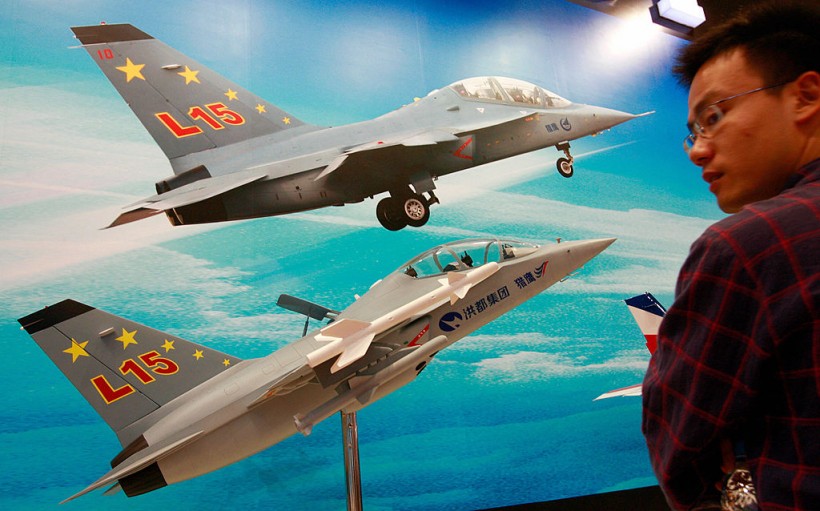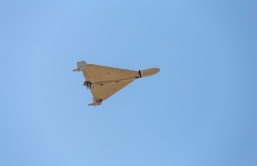
(Photo : TEH ENG KOON/AFP via Getty Images)
The Ethiopian Air Force will replace MiG-23s with the Chinese L-15 Falcon Light Fighter Jet as part of its upgrades.
China's L-15 Falcon Light fighter jets were acquired to replace the MiG-23 of the Ethiopian Air Force of its aging fighter fleet.
More nations are opting for Chinese-made fighters that are getting more attention in defense expos showcasing cheaper and more capable military hardware than the US. These planes offer technology that is perfect for the security concerns of nations that are not that prosperous.
China's L-15 Falcon Light Combat Aircraft
The Ethiopian Air Force is expected to become the second export client for China's L-15 light fighter jet after the country's Defense Ministry ordered the plane in 2021, reported View60.
Warplanes are expected to replace the country's outdated fleet of MiG-23 variable swept wing third-generation fighters, making up one of the nation's military two squadrons alongside bigger Russian-supplied Su-27 Flanker jets procured in the 1990s, cited Military Today.
Plans drawn up for the replacement of the Su-27 have been hinted at modern variants of the same type as top choices. Along with Angola, North Korea, Syria, and Cuba, Ethiopia is one of just five remaining operators of the older and considerably lighter MiG-23, which has been out of production since 1985.
The L-15 is a variant of China's JL-10 trainer, and it initially saw service in 2010. This is the most advanced of three current trainer classes, including the JL-8 and JL-9.
It is classified as a light trainer with advanced combat characteristics compared to its competitor, capable of Mach 1.4 as the top speed with agile handling. But the Taiwanese Brave Eagle has the same capabilities in combat performance.
Read Also: Xi Jinping: 5 Things To Know About China's President
China's L-15 Falcon Light Fighter Jet has the advantages of its derivative, the JL-10 trainer; it is getting more from advanced combat and weapons used for it, noted Military History.
Integration of a passive electronically scanned array (PESA) radar with a sensing range of over 110 kilometers and the ability to bring jammers for electronic assault missions are also significant enhancements.
Falcon Capabilities
The Chinese L-15 has two engines but is still considered a light fighter with low operational costs that are better due to its dual engines on combat missions.
Its flight effectiveness is equivalent to that of the American F-16 Fighting Falcon, though its speed and endurance are significantly lower. It falls well short of the MiG-23, the world's fastest and highest-flying single-engine fighter.
The L-15 has several advantages, the most notable are its modern construction materials and avionics and sensors, which are many decades ahead of the MiG-23, making it ideal for precision attack and air-to-air missions.
Speculations that it can use PL-12 air to air missiles that are radar-guided with good attack range and better performance.
The PL-12 will outrange both the MiG-29 fighters of neighboring Eritrea and, more important, the Egyptian Air Force's F-16, Mirage 2000, and Rafale fighters that use antiquated AIM-7 and MICA missiles.
All of the mentioned fighters, except the Rafale, employ mechanically scanned array radars, which would be much easier to jam and less effective than the mechanically scanned radar of the Chinese light fighter.
The conflict between Egypt and Ethiopia over the Grand Renaissance Dam project made the L-15's ability to counter such fighters, adding to the internal dispute with the Tigray uprising in Ethiopia backed by the western powers.
China's L-15 Falcon Light Fighter Jet will be a game-changer for the Ethiopian Air Force, especially its characteristics perfect fewer money nations that mean value.
Related Article: Chinese Shenyang J-16D Electronic Warfare Plane Joins Combat Exercise; Could It Match the American EA-18G Growler?








